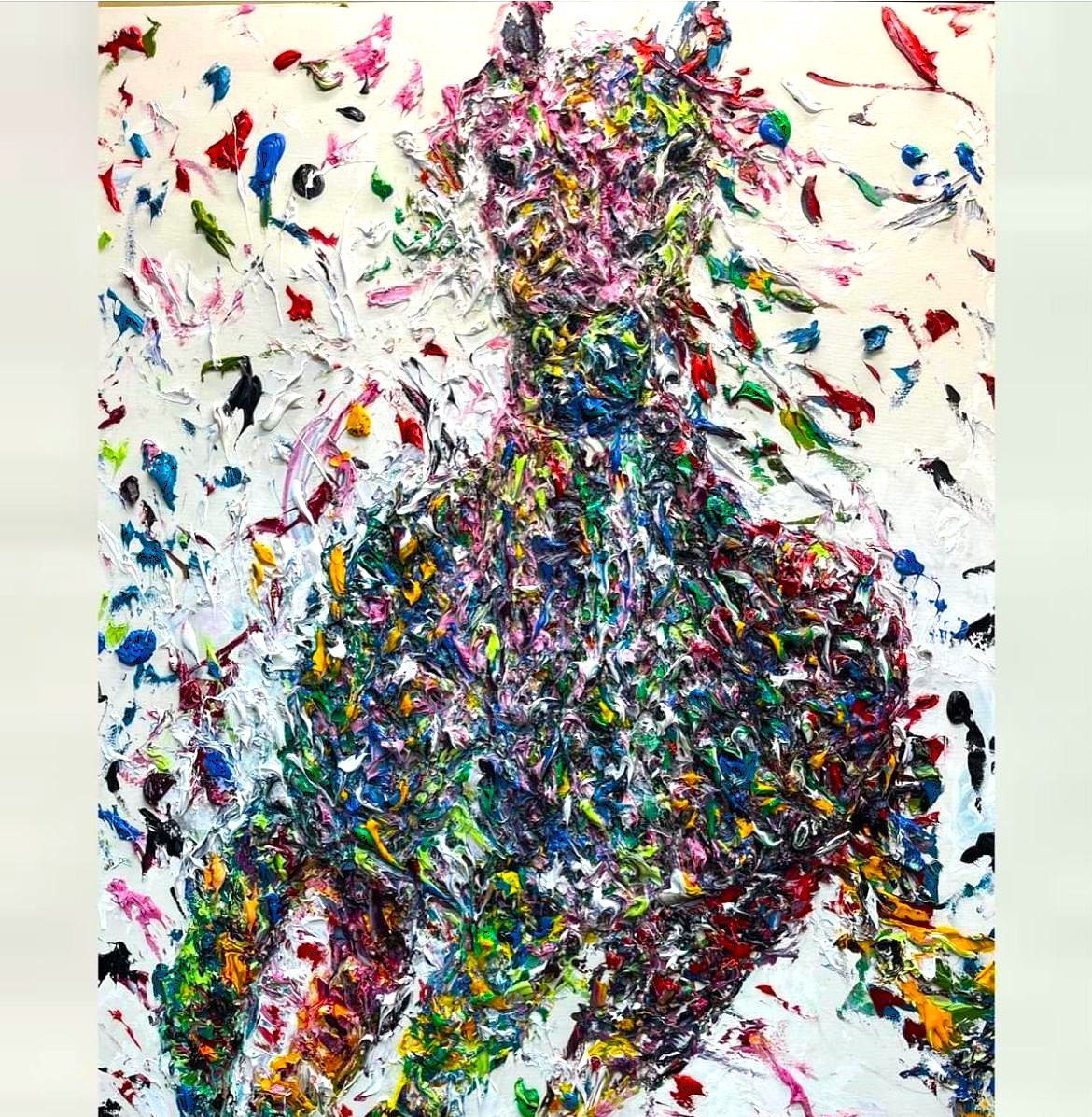
Liliana Rossini was born in Bagnolo Mella (BS) in 1958.
Since her adolescence, she has been deeply attracted to painting, consistently favouring very bright colours.
After obtaining her degrees in Architecture and Interior Design, she pursued the technique of porcelain painting under the tutelage of American and Japanese masters. Her preference for large porcelain pieces, which focus on natural subjects rather than decorative or ornamental themes, defines her artistic approach. Subsequently, she transitioned to working with oil on canvas, frequently depicting landscapes with a neo-Impressionist quality. This phase represents an essential step in her artistic journey, enabling her to ultimately reach her poetic vision.
She then moves on to explore with a keen eye the world of animals, large animals: lions, rhinos, tigers, panthers, elephants to name but a few.
More and more she approaches a material technique, mellow, full-bodied and of powerful tactile value, electing the spatula as the preferred expressive medium to interface with her creations.
She proceeds to explore portraiture, a field she subconsciously engaged with during her adolescence. Her work delves into the human psyche so profoundly that the images transition from figurative representations to more abstract forms. This shift allows for the emphasis on the chromatic qualities of the material used. The artist aims to depict subjects on canvas that strongly evoke their inner essence.
She loves colour, she loves essential expression. She is an expressionist artist.
Every action occurs without explicit reasoning. It is either the right moment or it is not. The absence of ego transforms the work in an otherworldly manner; colours are applied with complete spontaneity, which resonates with the artist’s deepest creative impulses. Her work is driven by the instinct of the moment, and the application of colour stems from a decisive and strong inner impulse.
The artist chooses oil on canvas as the medium, which imparts a distinctive mellowness, rich chromatic luminosity, and enduring stability over time. According to the artist, only the creative and empathic connection with the subject defines the framework. A piece of art, in the artist’s view, must possess character rather than mere beauty.
The artist likes to give the work an expressive force where colour, as well as material value, imposes itself on the eye of the beholder.